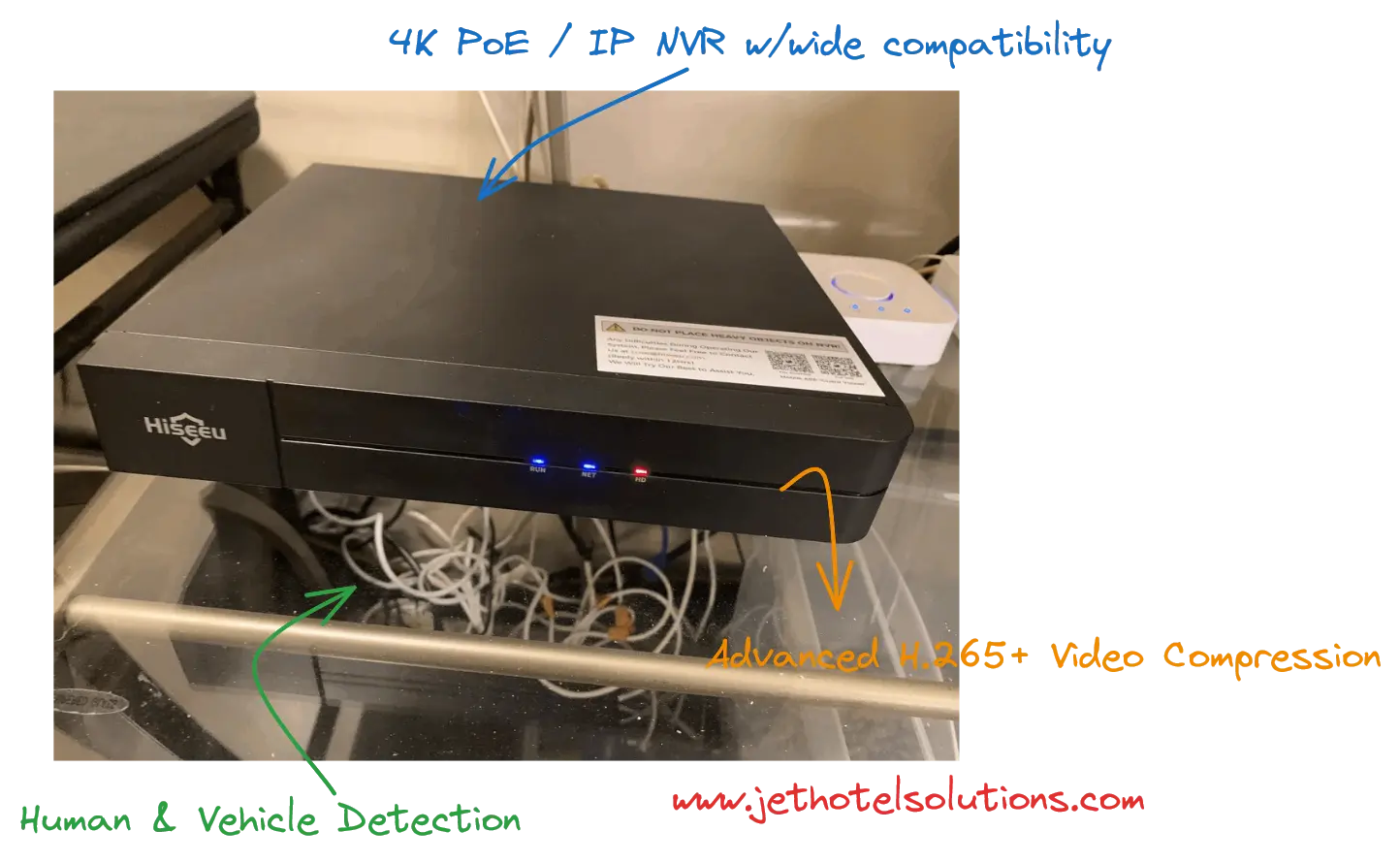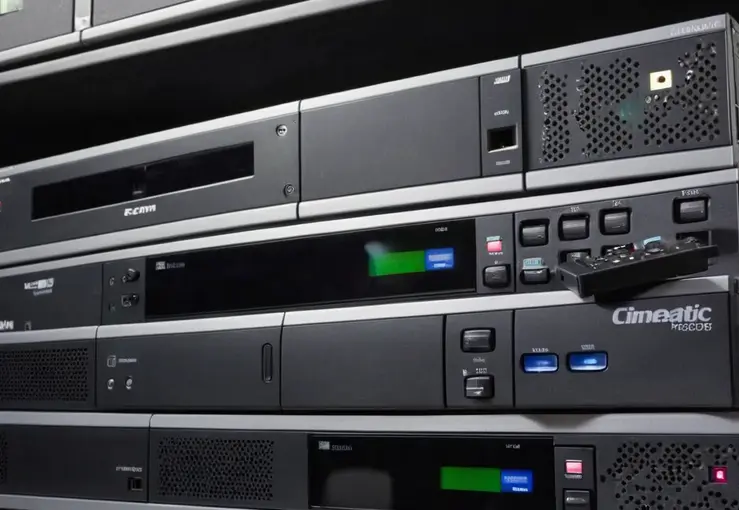Security cameras were once simplistic recorders of fuzzy, grayscale footage, stored on clunky tapes and monitored only when something went wrong. But modern network video recorders (NVRs) have transformed surveillance into a sophisticated operation where high-definition footage can be accessed in real-time, analyzed intelligently, and reviewed conveniently, from anywhere in the world.
NVRs are flexible computerized systems designed to capture the superb video delivered by internet protocol (IP) cameras, process it smartly, and store it securely – locally or in the cloud. Paired with today’s high-res digital cameras, NVRs leverage the power of networks to provide customizable security solutions scaled to an organization’s evolving needs. Let’s examine how NVR systems work and what makes them a standout choice for both large enterprises and family homes in the digital era.
The Power Team – Cameras, NVRs, and Networks NVR setups comprise a trifecta of core components that work in harmony:
IP Cameras The onsite eyes, IP cameras capture crisp footage and transmit it over wired or wireless networks. Their small size facilitates positioning virtually anywhere while integrated sensors can detect motion, faces, license plates and more.
Network Video Recorders
I’ve helped one of my clients to install NVR in his hotel, and here is my experience:

The mobile app was a standout feature for me. It was incredibly user-friendly and allowed me to check on my property anytime, anywhere. I found myself using it daily to keep an eye on my surroundings. Plus, the vendor of this NVR provided exceptional support when I encountered an issue with remotely viewing the cameras from my office. With their assistance, I was able to set up the PC client and access all the cameras seamlessly.
One of the best aspects of this NVR is its versatility. I was able to add my own cameras effortlessly, and the option to add either an SSD or HDD for storage was a major plus. With 16 ports of PoE, I had plenty of connectivity options for my cameras. Considering the affordable price, this NVR offered excellent value for the features it provided.
In terms of performance, I was impressed by the reliability and stability of the system. It operated flawlessly, and I didn’t encounter any major issues. The picture quality was outstanding, which greatly enhanced my surveillance experience. Installing the NVR was a straightforward process, and the overall build quality was top-notch.
To summarize, this NVR exceeded my expectations with its user-friendly setup, compatibility with various camera brands, and the convenience of the mobile app. The ability to add my own cameras and choose between SSD and HDD storage further enhanced its appeal. Despite the initial challenges in remotely viewing the cameras, the vendor’s support was exceptional and resolved the issue promptly.
If you’re in search of a reliable and feature-packed NVR, I highly recommend considering this product. It offers an affordable price point, excellent performance, and a wide range of customization options. With this NVR, you can have peace of mind knowing that your property is under reliable surveillance.
Real World Use Cases
While early CCTV cameras had extreme limitations, the technological trio of IP cameras, NVR equipment and wired/wireless networking has unlocked game-changing capabilities for security:
Superior Video Quality
Gone are the days of grainy, grayscale security footage. Megapixel IP cameras record ultra high-def 4K video plus audio, with impressive low-light sensitivity to capture every detail, day or night.
Enhanced Monitoring
Thanks to mobile connectivity, security teams can now keep eyes on multiple locations in real-time, without needing personnel observing banks of onsite monitors. Push notifications can also alert managers to activity instantly.
 Sophisticated Analytics
Sophisticated Analytics
Smart IP cameras boast built-in video analytics like facial recognition, license plate reading, object left behind detection, advanced motion tracking and more – greatly enhancing vigilance.
Ample & Accessible Storage
Modern NVRs leverage both local and cloud-based storage options to offer virtually unlimited capacity to maintain years of high-definition recordings in secure databases accessible from anywhere.
Flexible Scalability NVR/IP systems allow seamless expansion – simply add more IP cameras or higher capacity storage as an organization’s needs grow, with no need to replace underlying systems.
Choosing an NVR System Not all network video recorders are created equal. Organizations must carefully weigh options to select an optimal NVR system matching operational requirements as well as IT and connectivity constraints. Key considerations include:
Cloud vs On-Premises Deployment Cloud-managed recorders store data on highly durable remote servers while local NVRs utilize onsite storage. The right method depends on internet reliability as well as data sovereignty concerns. Hybrid models are popular to bridge advantages of both.
Wired vs Wireless IP Cameras
Running camera wiring can be complex and costly. WiFi streamlines installation but may cause connectivity gaps so performance is paramount. PoE (power over Ethernet) cameras simplify cabling needs by transmitting power/data over a single cable.
Camera Capabilities As eyes on the ground, IP camera tech specs directly impact monitoring effectiveness. Prioritize HD recording, low light sensitivity, video stabilisation, IR night vision and advanced analytics.
Access Control & Authentication Robust user access rules, password policies and two-factor authentication protocols are crucial to prevent NVR system data breaches by cyber criminals or malicious insiders.
Failover & Redundancy Provisions Mission critical setups require failover mechanisms and data redundancy measures across multiple storage drives or cloud instances to ensure uptime and prevent data losses in hardware failures.
Positioning NVRs for the Future
While modern cloud-connected NVR setups require greater technical mastery to manage compared to old analog DVRs, they unlock invaluable security and operational efficiencies through centralized monitoring, intelligent alerts and insights via sophisticated analytics. NVR systems also offer scalability that supports growing data needs.
By understanding key components like smart cameras, network video recorders and connectivity – as well as considering deployment models, storage tradeoffs and redundancy requirements – organizations can take advantage of these versatile platforms to protect people, property and data assets well into the future. Priority placed on solutions purpose-built for a digital world will ensure NVRs serve as dependable guardians through constantly evolving technological shifts on the horizon.

 Sophisticated Analytics
Sophisticated Analytics